Articles & News
Search posts in this category
2024

In vivo NMR is evolving into an important tool to understand biological processes and environmental responses. Current approaches use flow systems to sustain the organisms with oxygenated water and food (e.g., algae) inside the NMR.
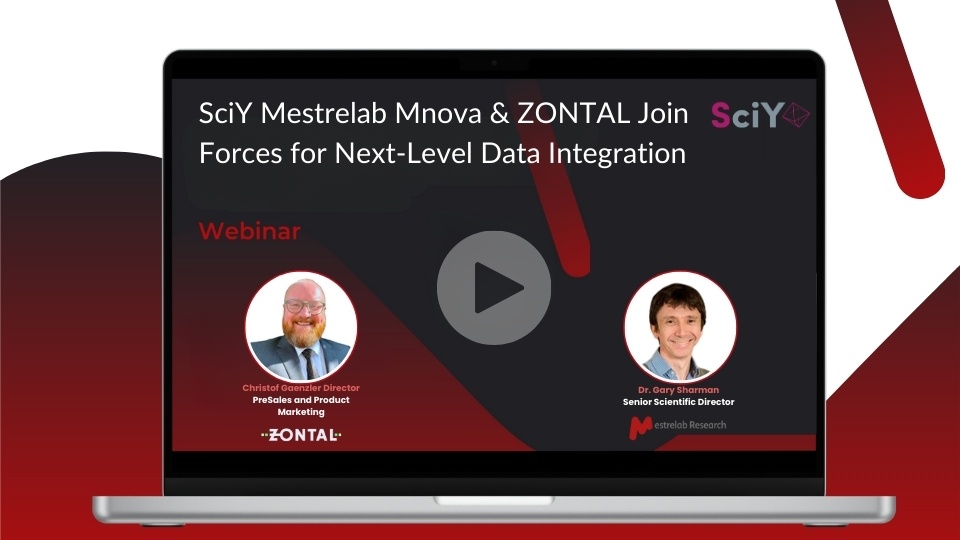
ZONTAL and Mestrelab by SciY are leaders in their respective areas of data digitalisation and complex analytical data processing. In this talk we explore how the two products can be seamlessly integrated to add convenience and value.
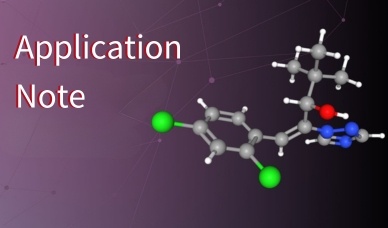
In this application note, Prof. Rafael Cela and Dr. Leticia Pérez-Mayán outline the use of Chrom Best Method for evaluating LC separation of diniconazol, showcasing its effectiveness in meeting the analytical demands for a successful chiral separation.
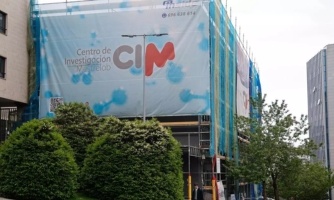
Mestrelab impulsa un centro de investigación en Santiago para aplicar la Inteligencia Artificial en biotecnología: “Es la nueva revolución”

Press Release: Mestrelab Research, a leading chemical and life sciences software company, expanding its presence in China with ADG as its local operating partner.

Mestrelab impulsa un centro de investigación en Santiago para aplicar la Inteligencia Artificial en biotecnología: “Es la nueva revolución”


Join us for an engaging webinar on high throughput analytical data management featuring Holly Douglas, Senior Research Scientist from AstraZeneca. Discover how integrating the Reaction Optimization software solution is revolutionizing drug discovery by streamlining workflows and enhancing data quality.
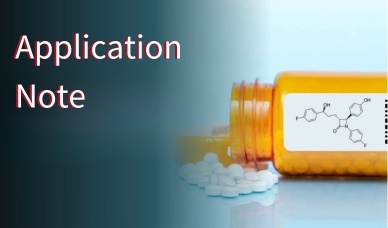
In this application note, Prof. Rafael Cela, showcases the selection of LC procedures using Mgears Chrom Best Method and highlights how automation streamlines the screening process and helps in analysis, reporting and decision…

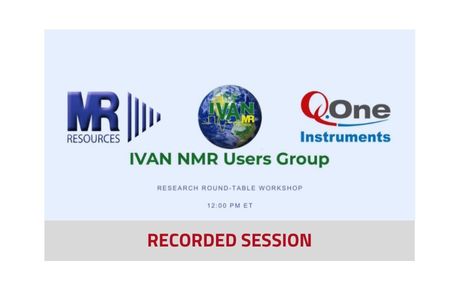

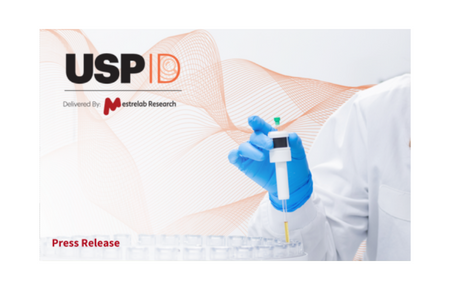
The U.S. Pharmacopeia (USP) and Mestrelab Research, S.L. (Mestrelab), are pleased to announce they have entered into a collaboration to deliver USP-ID, through Mestrelab’s Mnova platform.
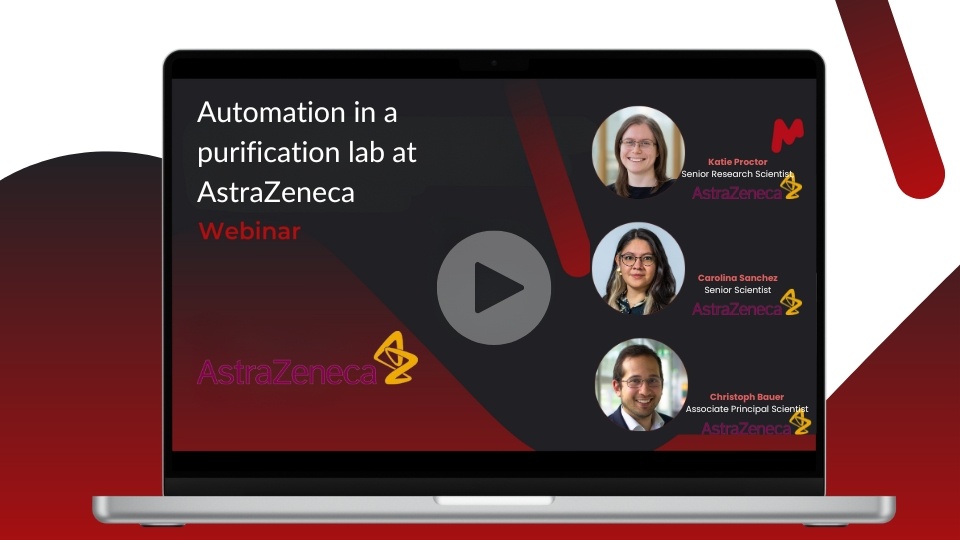
Automating the processing of analytical data for multiple drug discovery applications.
Join us for an insightful session where scientists and IT professionals from AstraZeneca come together to explore the complexities of managing analytical data within a purification lab setting.
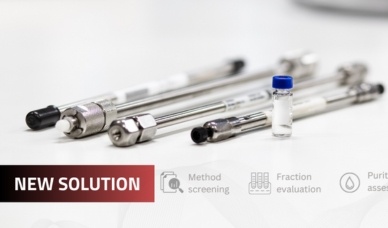
We are excited to introduce our Mnova Purification Suite, meticulously crafted to offer flexible, modular solutions that address the critical aspects of chromatographic purification. Our suite comprises three modules, each tailored to cater to distinct purification needs:
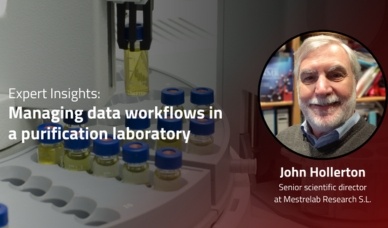
In this insightful exchange, we are privileged to have John, a distinguished expert with over 40 years of experience in the scientific and informatics domains, particularly within the pharmaceutical industry.
John’s extensive background in analytical chemistry, ranging from NMR and chromatography to chemical structure representation…

Spectroscopic techniques, particularly NMR, frequently encounter the challenge of overlapping peaks. Thus, the need to enhance the resolution of such spectra has been the subject of extensive research for decades

In the world of spectral data, the struggle to access and manage diverse datasets across various platforms is real. That’s why we’ve developed Mnova Hub, a unified data browser designed to connect Mnova seamlessly to various data providers. Mnova Hub empowers you to retrieve, modify, and store data effortlessly from within Mnova, without the need to download and/or open each dataset individually.
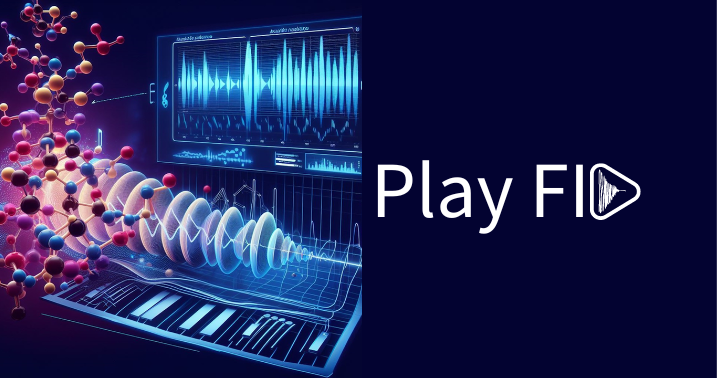
Play FID is a new tool included within the latest version of Mnova 15.0.1. The purpose of Play FID is to provide an auditory representation of NMR data, enhancing the interpretation and understanding of NMR spectra.
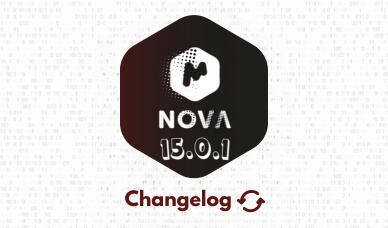
We are excited to introduce Mnova 15.0.1, a minor release that brings not only bug fixes but also introduces new features and products. This update includes the development and implementation of innovative tools such as ElPulpo, a new NMR resolution enhancement algorithm, and Play FID, which enables users to audibly experience NMR data.

This work explores the evolution of auditory analysis in NMR spectroscopy, tracing its journey from a supplementary tool to visual methods such as oscilloscopes, to a technique sidelined due to technological advancements
2023
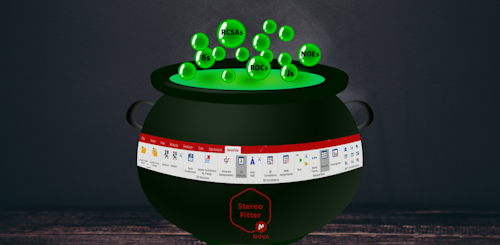
Liquid-state NMR plays a pivotal role in resolving the structural mysteries of molecular compounds across diverse fields such as synthetic organic and inorganic chemistry, as well as medicinal chemistry.
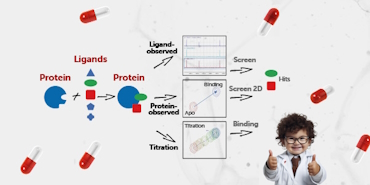
Optimizing Fragment-Based Drug Discovery by NMR: A Deep Dive into Mnova Screening Software Solutions
Fragment-Based Drug Discovery (FBDD) and validation of small molecules binders using NMR has emerged as a powerful method in early-stage drug development. This post explores the general use of analytical techniques and innovative screening software solutions that optimize the process, enabling researchers to identify promising drug candidates with precision.
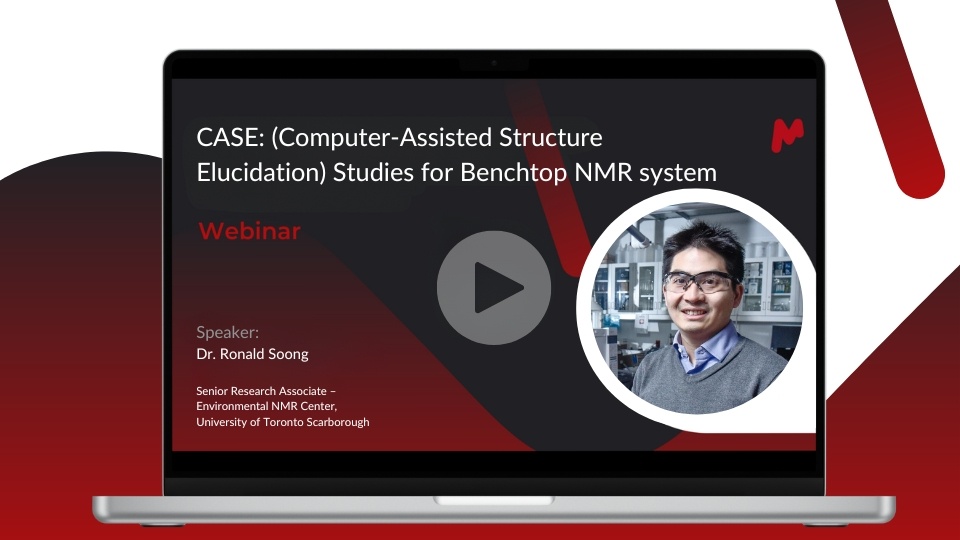
Join us for a webinar on “CASE (Computer-Assisted Structure Elucidation) Studies for Benchtop NMR system” presented by Dr. Ronald Soong, Senior Research Associate at the Environmental NMR Center, University of Toronto Scarborough. Explore the increasing popularity of benchtop NMR systems in undergraduate laboratories and gain insights into the selection of the most suitable system for educational objectives.

Mnova 15 is a game-changing release, introducing new products, versions, and commercial adjustments. Enhancements across plugins like NMR, MSChrom, Chemometrics, and DB deliver an upgraded user experience.
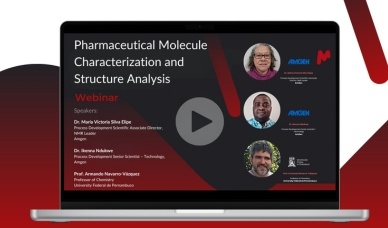
Dr. María Victoria Silva Elipe, Process Development Scientific Associate Director, will be leading an insightful conversation on Practical Measurements Strategy of Anisotropic RDC Data for Stereochemical Characterization of Molecules. Followed by Dr. Ikenna Ndukwe discussing Mnova CASE-3D Methodology and DFT Combine for Unambiguous Structure Analysis of AMGEN APIs. We will have Professor Armando Navarro-Vázquez, who will speak about StereoFitter. Practical multiparametric NMR stereochemical analysis and will provide some recommendations and novelties.
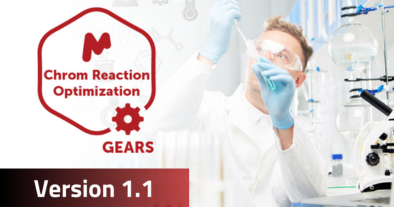
We are excited to announce that Chrom Reaction Optimization is close to release, and we couldn’t be more eager to share a sneak peek with you!
The invaluable feedback from our early customers has played a pivotal role in shaping this product into something truly exceptional…
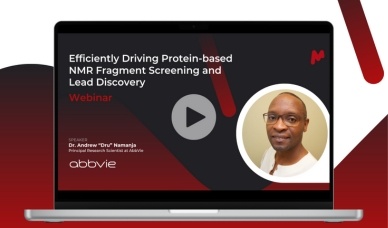
Dr. Andrew “Dru” Namanja, Principal Research Scientist at AbbVie, will explore the potency ranking methods involving both qualitative single-point ligand concentration (Q Score) and quantitative binding affinity (KD), and how the combined utility can be used successfully to drive a Fragment-Based Drug Discovery (FBDD) campaign
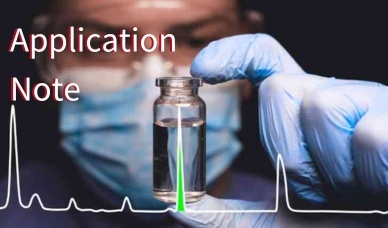
The screening and selection of the best chromatographic methods play a pivotal role in the synthetic chemistry pipeline as it allows the obtention of high-purity materials for downstream uses. In this application note, we delve into the essential factors and consideration involved in evaluating chromatographic methods through a scoring approach.
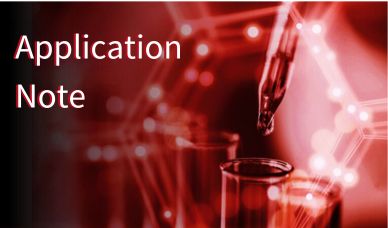
Reaction optimization is crucial for achieving efficient syntheses of final products or intermediates. While different approaches can reduce the number of trial reactions, effectively handling and analyzing LCMS data to quantify components remains a significant challenge…
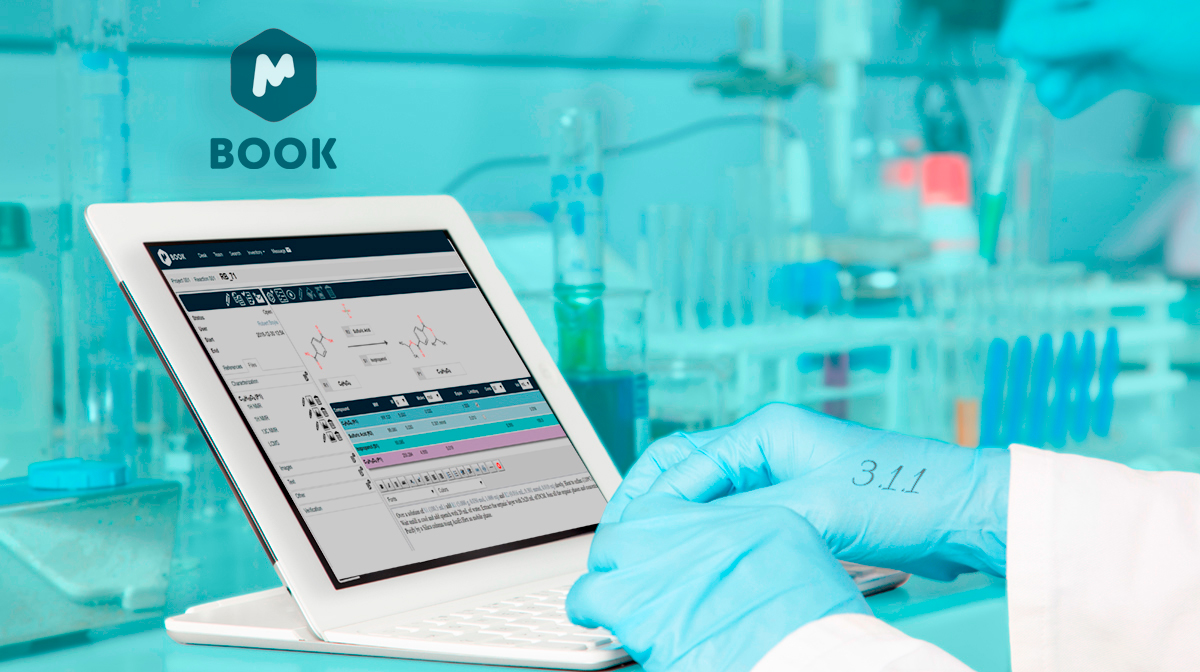
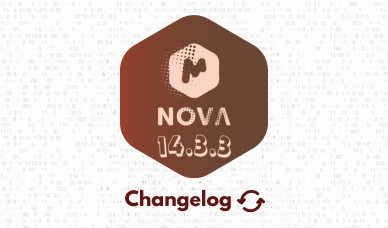
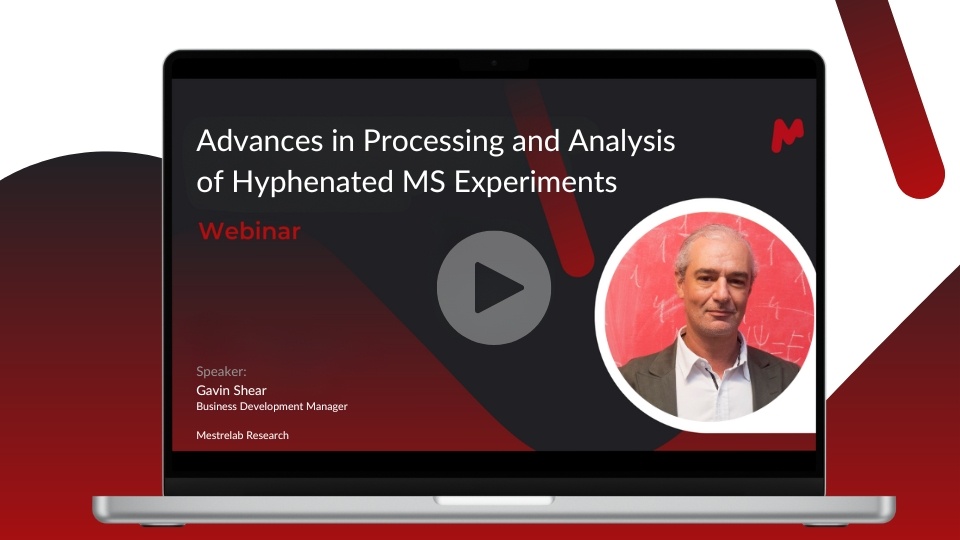
Gavin Shear (Mestrelab) describes expert tools to the desktop user, with game changing enhancements in peak picking, spectral display, and spectral substraction using Mnova MSChrom.

No automation exists in a vacuum. Inputs and outputs to the process (or rather the ease with which these connections can be achieved) can make or break the overall automation. There is no point having a wonderful automation processing 10,000 samples if all the results then need to be transcribed manually into a corporate database!
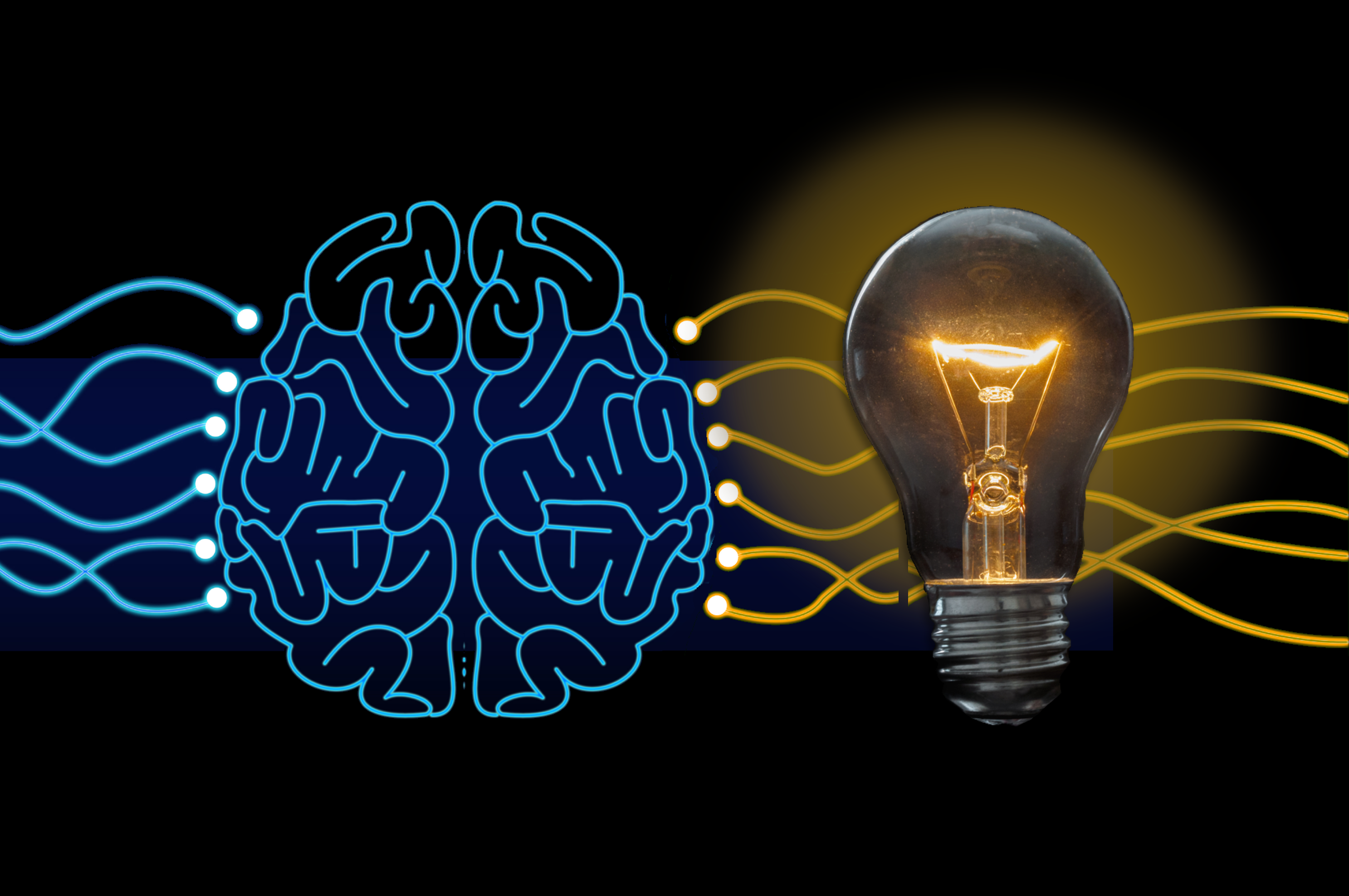
Experts working with chemistry – from small molecules right up to macromolecules and from pure compounds through to complex mixtures – know that the analytical data acquired by the instruments is empty and meaningless without analysis and interpretation.

Agreeing in principle that there are benefits to data automation is one thing, yet in practice, changing standard processes to implement such automations can be a much more complicated decision to make, especially when lacking the internal expertise to take care of such changes.
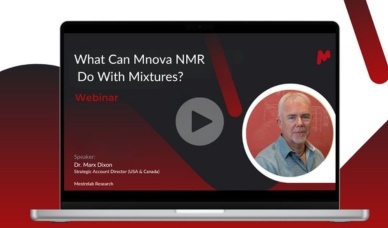
Dr. Mark Dixon (Mestrelab) gave a webinar on how identification and/or quantification of components of a mixture in solution is a common problem that a chemist must solve on a frequent basis.

Mnova NMR can handle datasets from the most important NMR vendors. You can see the whole list here. If you have any doubts regarding your datasets and format compatibility with Mnova NMR just contact us.

The demand for, and adoption of lab automated systems has been constantly increasing over the past few years, the market for which is anticipated to grow by 7.6%, up to $9.21 billion, by 2029.
2022

Fragment-based drug discovery (FBDD) and validation of small molecule binders using NMR spectroscopy is an established and widely used method in the early stages of drug discovery. Starting from a library of small compounds, ligand- or protein-observed NMR methods are employed to detect binders, typically weak, that become the starting points for structure-activity relationships (SAR) by NMR.
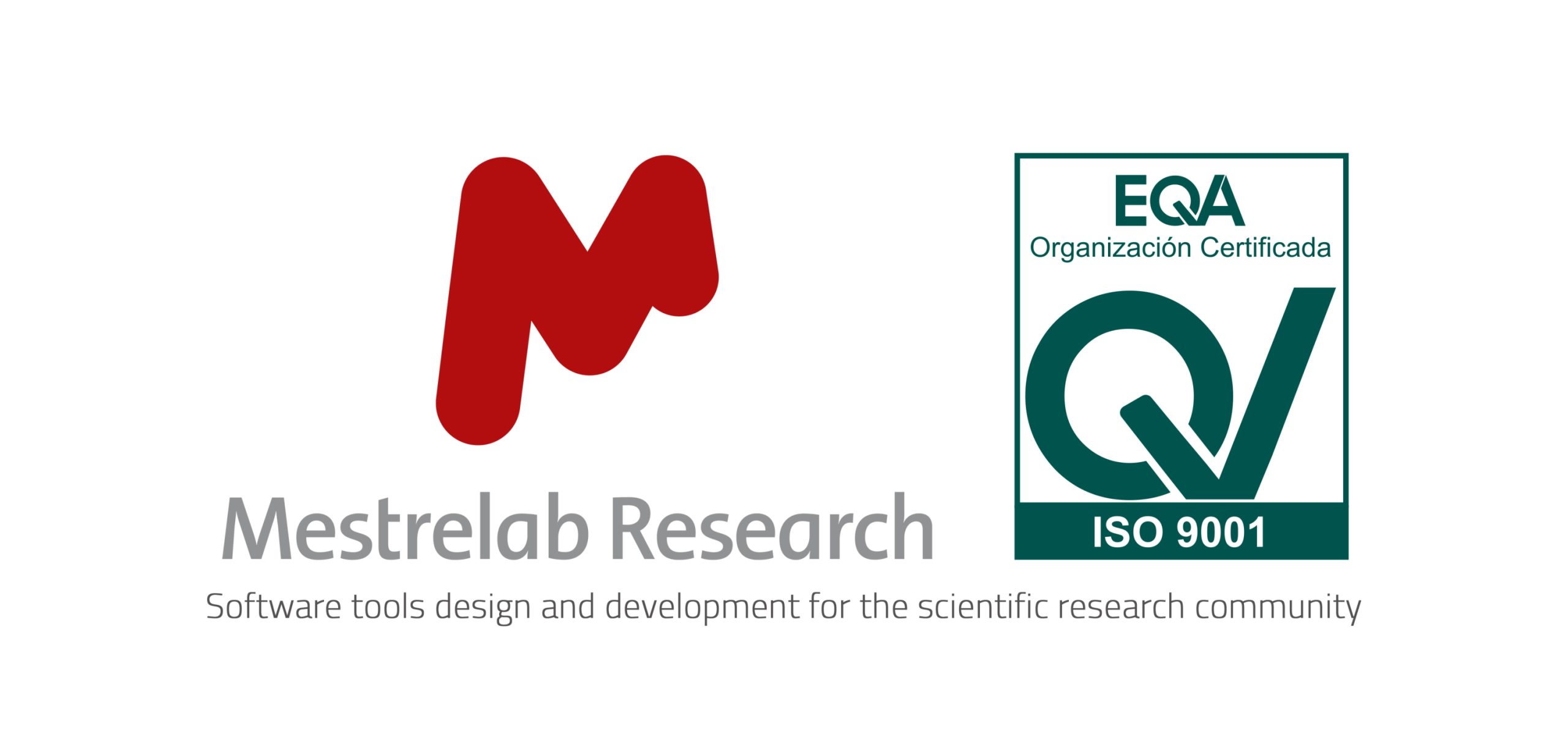
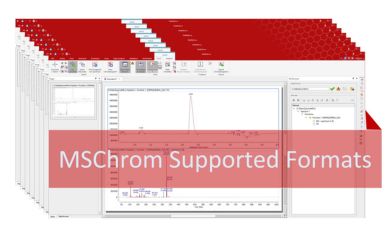
This is the list of provider data sorted per OS supported by Mnova MSChrom. Note that Mnova 15 does not support Windows x32 formats.
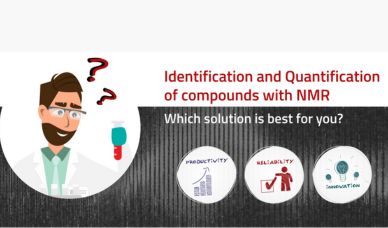
Mnova offers multiple ways to address the analyses of mixtures when presented in NMR spectra, whether they are targeted or untargeted, and whether they require component identification and/or quantification. The most suitable technique depends upon the application.

Mnova LC/GC-MS software solutions for your analysis. A popular desktop application, a powerful automation engine, a task-specialized analysis

The recent popularity of benchtop (BT) NMR systems has prompted its applications in undergraduate laboratories around the world. Owing to their low maintenance cost, due to the lack of a superconducting magnetic core, and simple operation, these BT NMR systems can fulfill many of the learning objectives outlined in the undergraduate organic chemistry curricula.

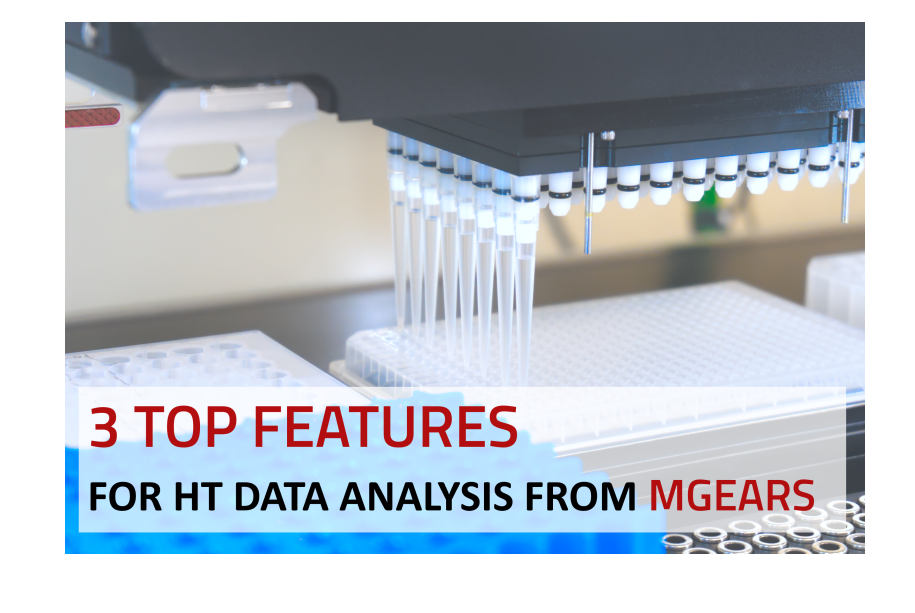
High-throughput (HT) analyses have become extremely popular, if not essential, for daily activities in the majority of analytical laboratories, ranging in use from R&D, to manufacturing, to quality control.
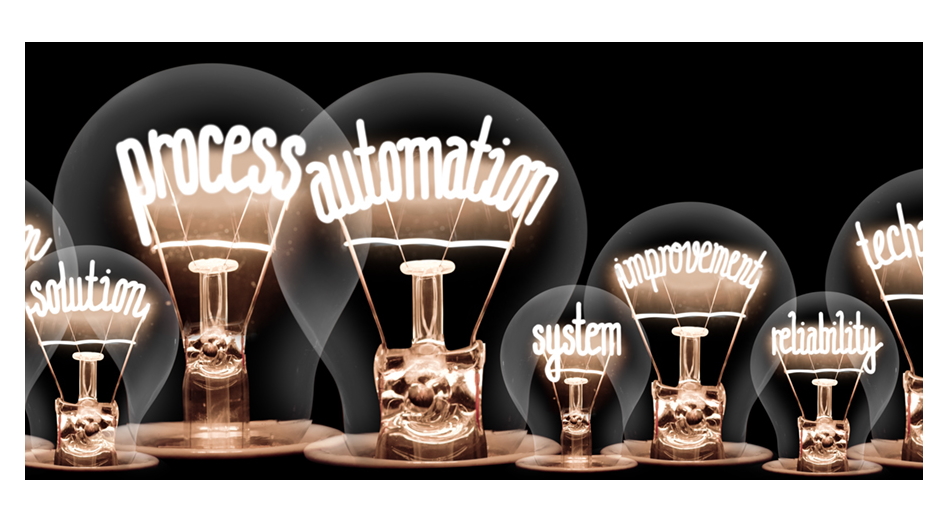
Mestrelab Research SL, innovators in analysis and management of complex analytical data, is announcing the release of a new set of automated solutions for chromatographically coupled MS (LC-MS and GC-MS) data workflows.
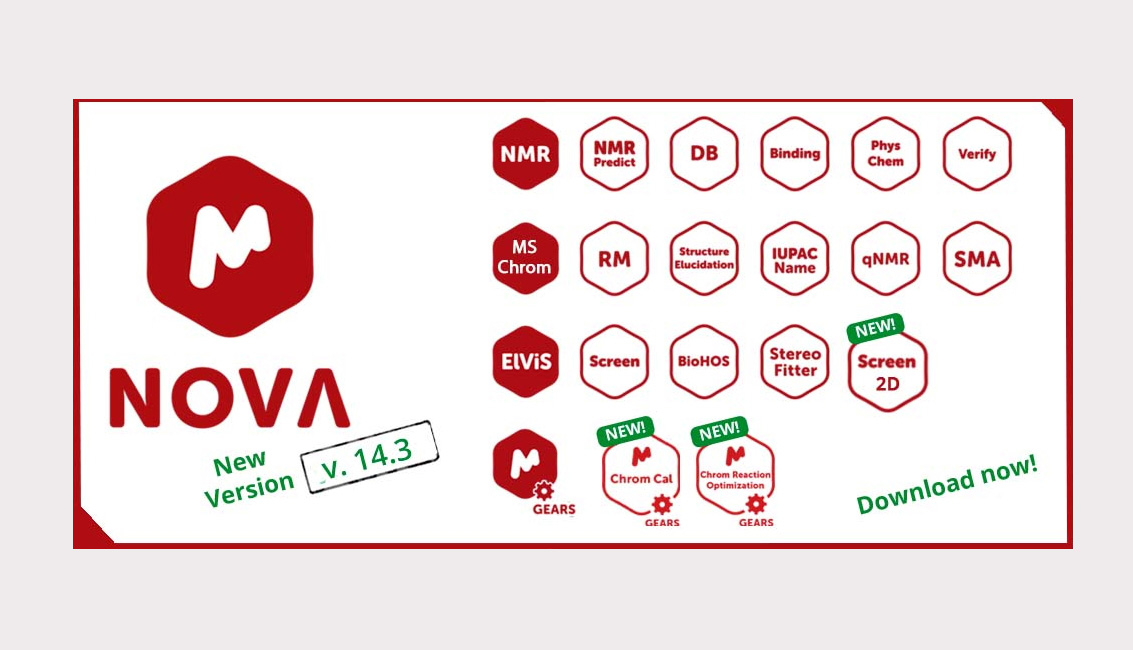

Robotics automation is rapidly changing our world; ‘bots are everywhere. Today, we find them in so many places, from providing customer support on insurance websites through to industrial robotics involved in car manufacture and food production.
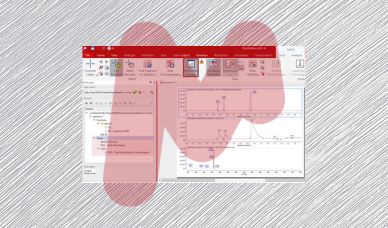
When analyzing LC/GC-MS data, it may be necessary to align your chromatogram with the analytical trace so that the peaks match across the different spectra…

“Back in 2017, only one project is using qNMR for solubility; since we implemented Mnova automated qNMR in 2018, all our projects are now using the method.” Maggie Liu – Expert NMR Spectroscopist in the structural chemistry team – Institute of Cancer Research (ICR).
2021
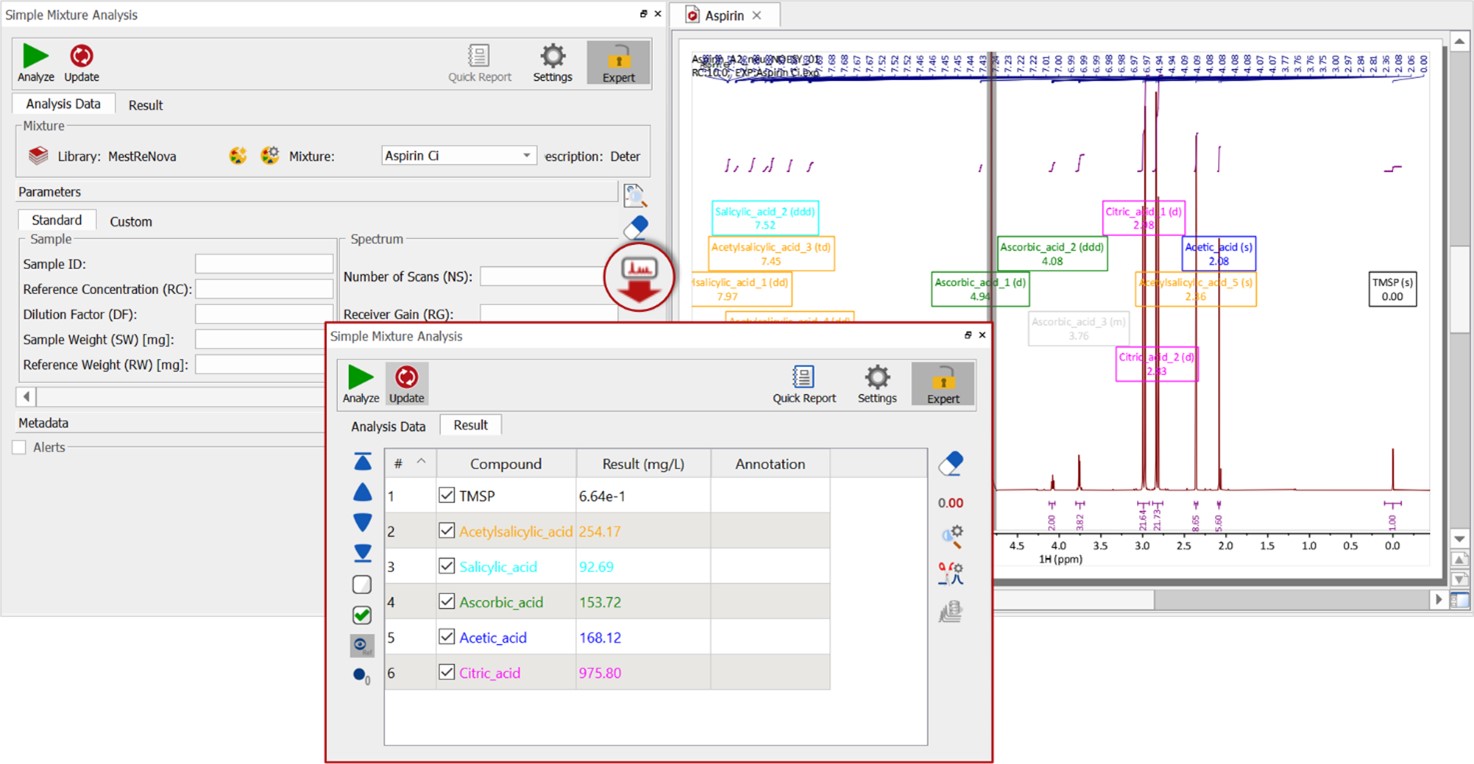
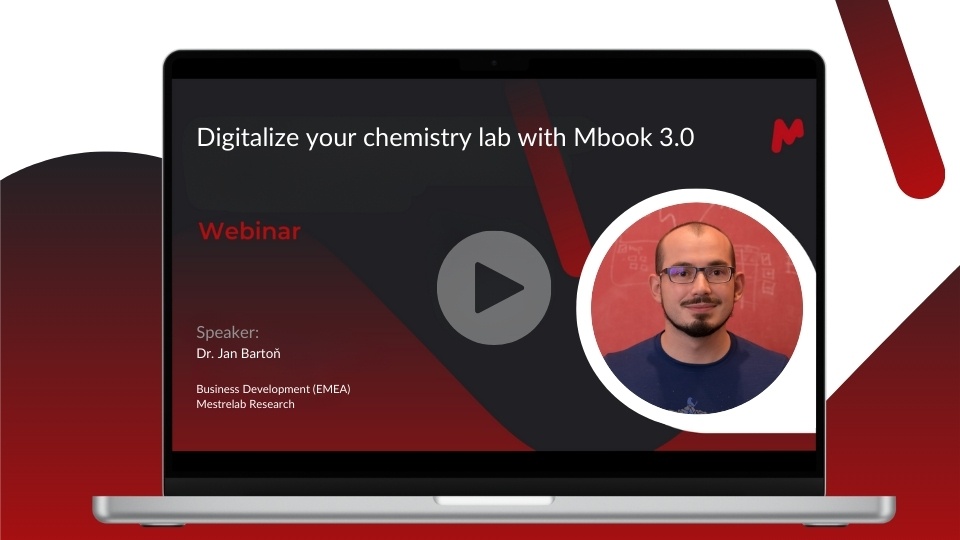
The webinar will cover the complete workflow required to create digital laboratory notes in Mbook 3.0. The outline is a high-level introduction, followed by a demonstration of typical daily workflow, and a Q&A session.
The new features of Mbook 3.0 will be covered together with the chemist’s daily workflow, as they are inseparable from the chemist’s work.

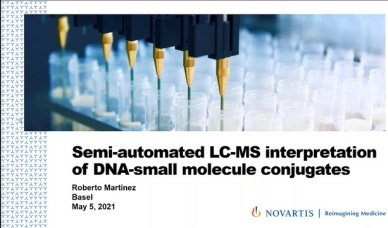
In this webinar you will get some insights on how Mgears and the QC profiling plugin can facilitate the interpretation of up to thousands of LC-MS per week and the subsequent loading of the retrieved information into databases.
2020
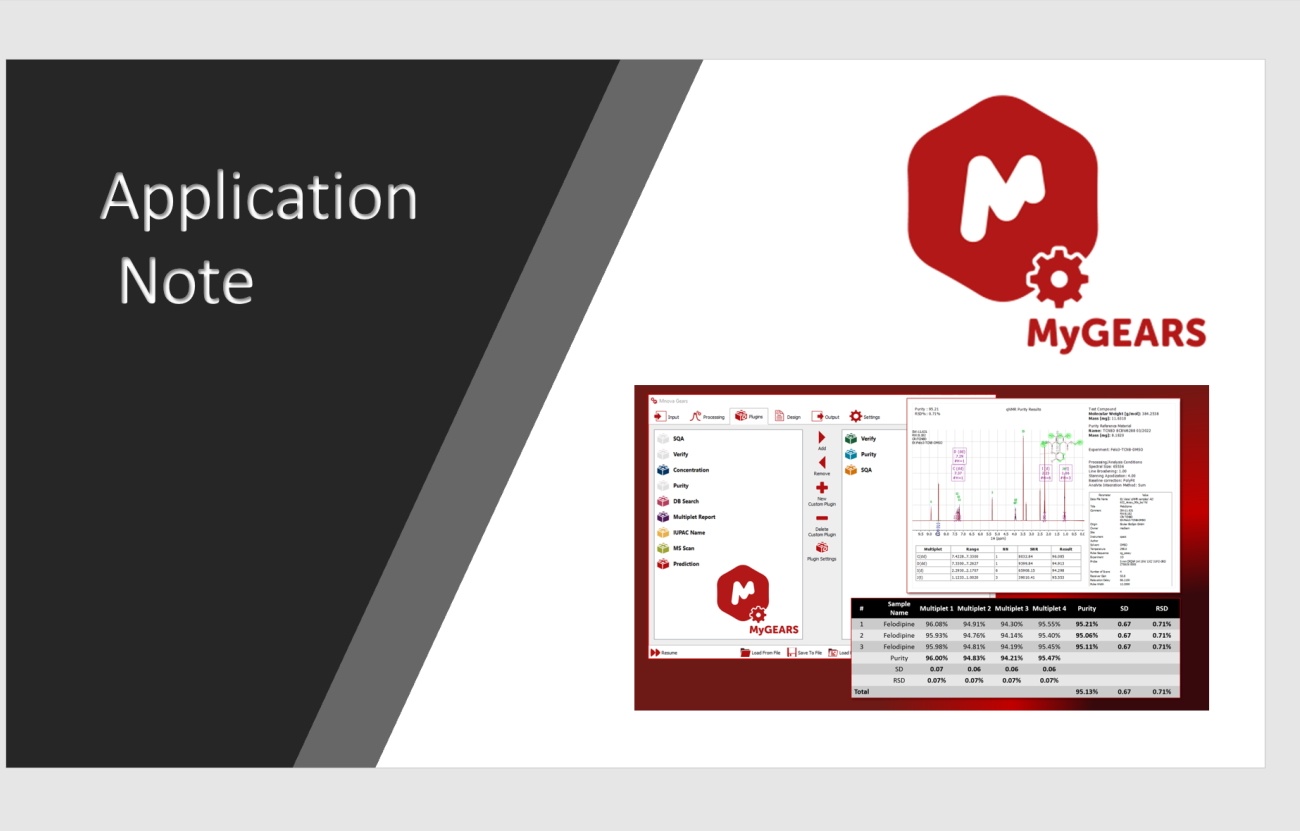
MyGears in action – Automated qNMR, Structure Verification and Spectrum Suitability Testing with ONE Click.
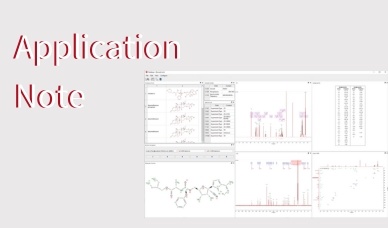
Turning your spectroscopic data into a searchable resource.
Using MyData to efficiently retrieve what you are looking for in a few mouse clicks

Store, share and search your chemical and analytical data
This is the recorded session of the workshop Mestrelab given by Mestrelab CEO, Santi Dominguez in April 2020.
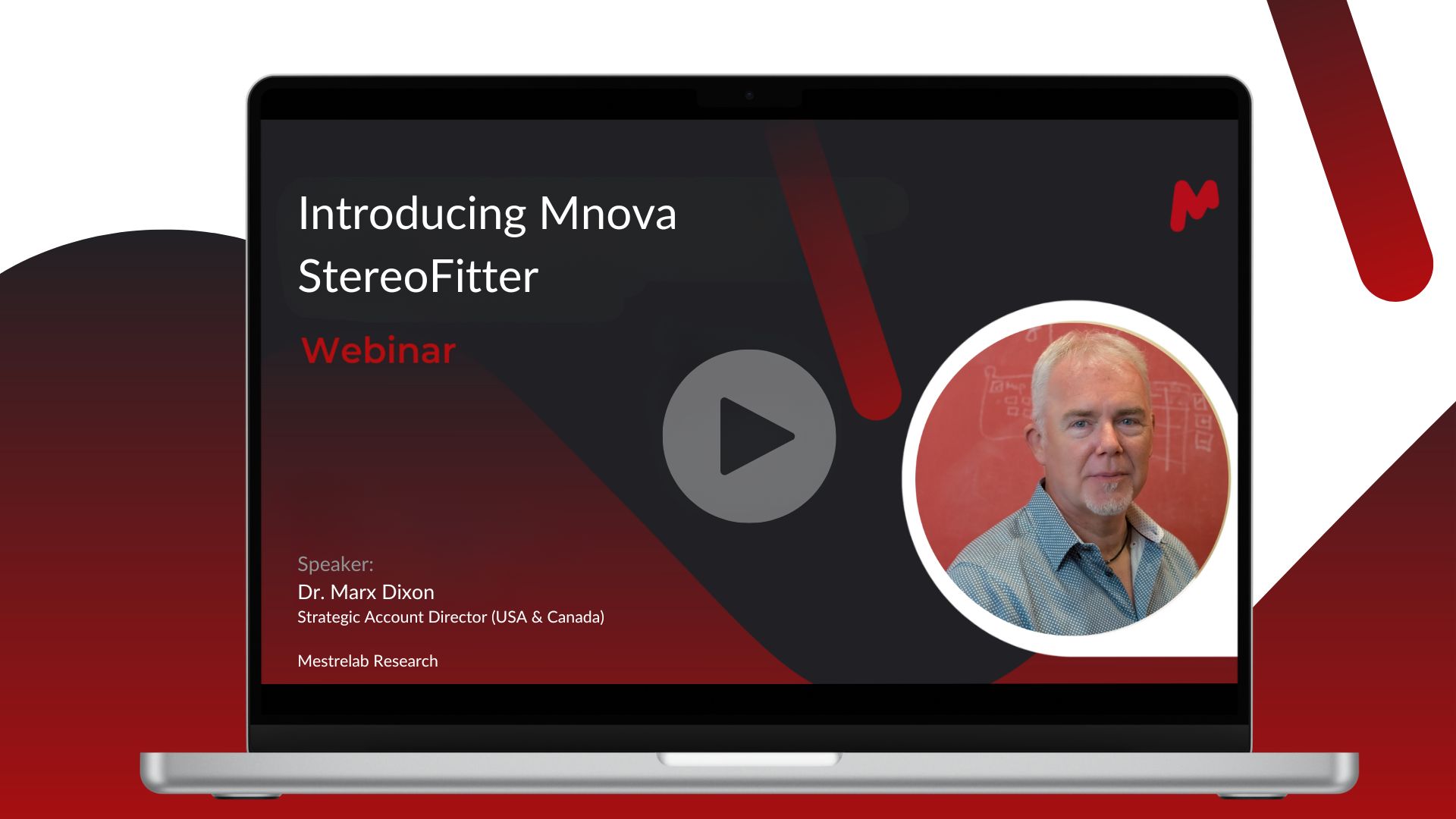
This webinar will demonstrate a new capability for chemists to elucidate 3D structure of their molecules for themselves, using a comprehensive set of tools integrated together as a plugin for Mnova NMR. Using readily available NMR constraints it will be shown how simple it is to extract a best-fit from a set of conformers or stereoisomers in a very short amount of time.
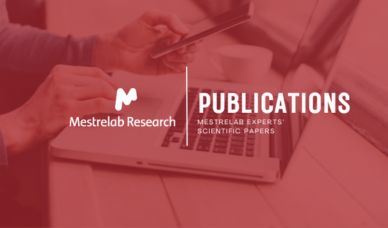
Adequate characterization of chemical entities made for biological screening in the drug discovery context is critical. Incorrectly characterized structures lead to mistakes in the interpretation of structure–activity relationships and confuse an already multidimensional optimization problem.

Machine learning (ML) methods have been present in the field of NMR since decades, but it has experienced a tremendous growth in the last few years, especially thanks to the emergence of deep learning (DL) techniques taking advantage of the increased amounts of data and available computer power.
2019
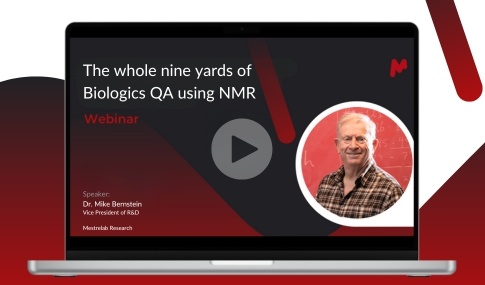
We had a very exciting webinar about a hot topic in the NMR field, Higher Order Structure (HOS) analysis of biotherapeutic proteins. Dr. Donna Baldisseri (Bruker) described recently developed and optimized acquisition techniques. Dr. Mike Bernstein (Mestrelab) showed how data can be easily processed and analysed with the recently launched Mnova BioHOS plugin

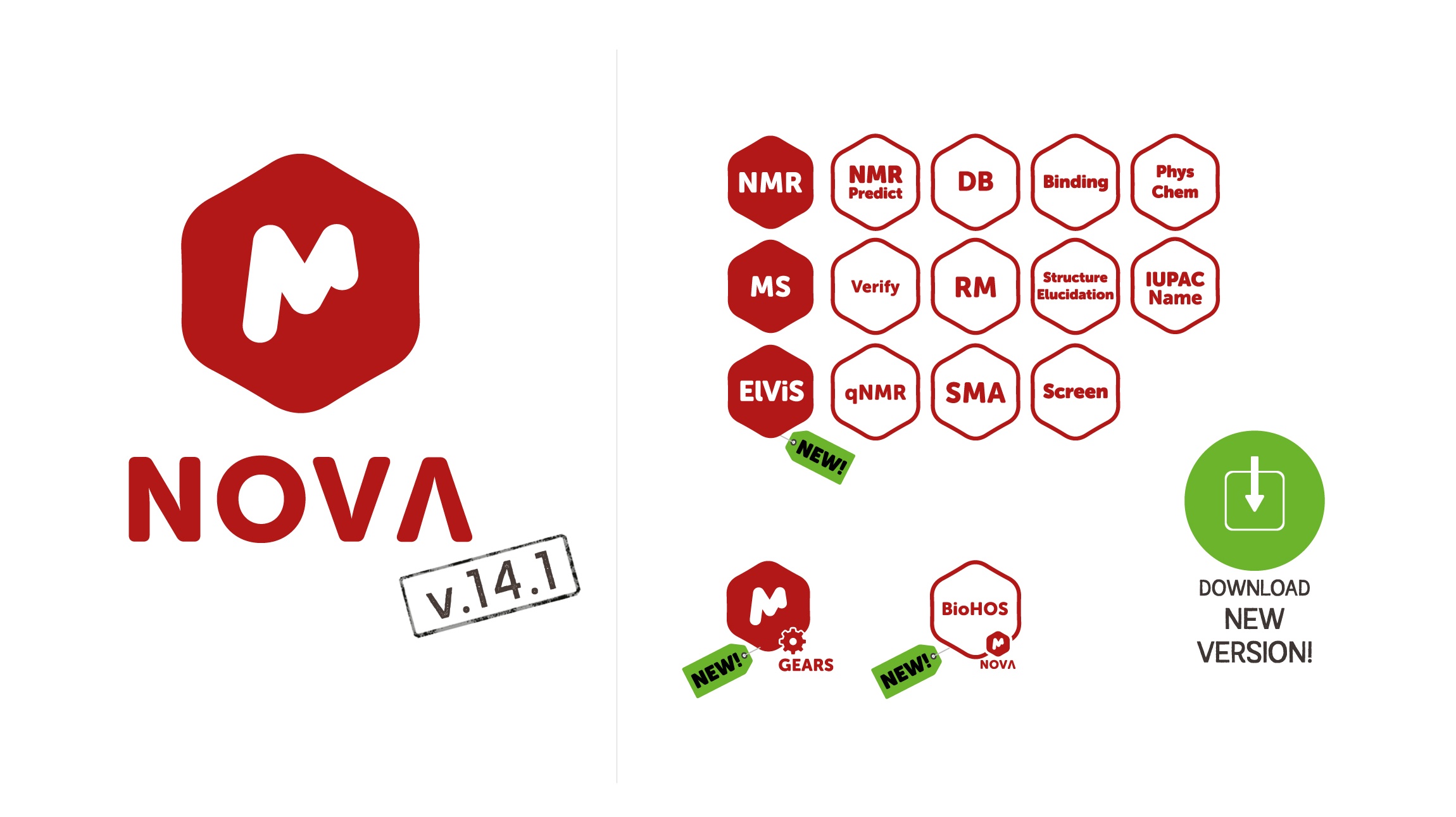
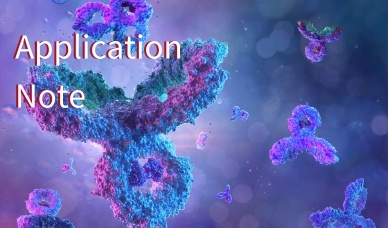
Therapeutic pharmaceuticals (drugs) have witnessed a sea change in recent years. The large, dominant group of drugs derived from synthetic, small molecules has been joined by a new type of drug that has been very effective with diseases that were previously untreatable.
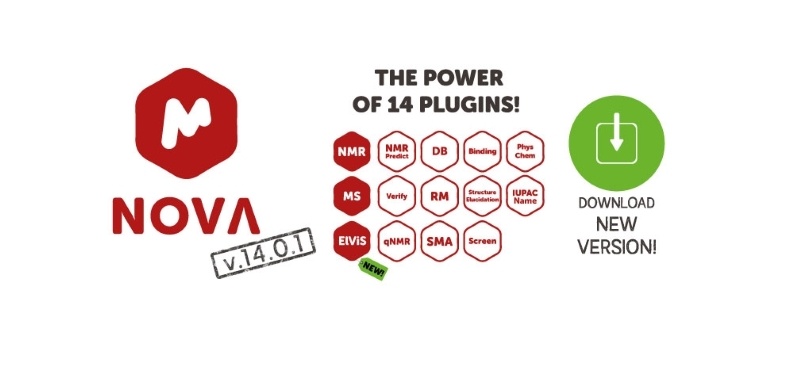

There is an increasing focus on the part of academic institutions, funding agencies, and publishers, if not researchers themselves, on preservation and sharing of research data. Motivations for sharing include research integrity, replicability, and reuse.
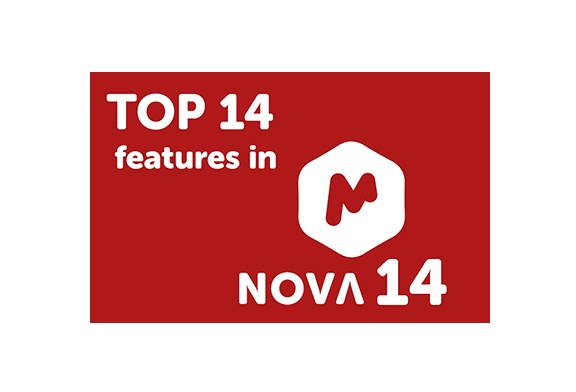
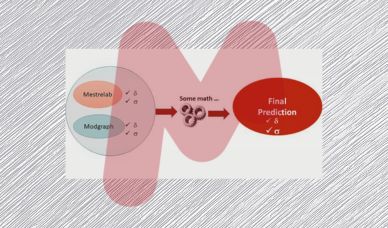
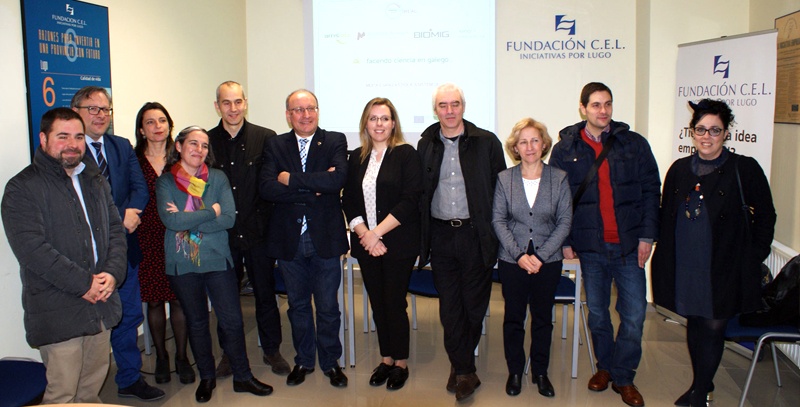
2018
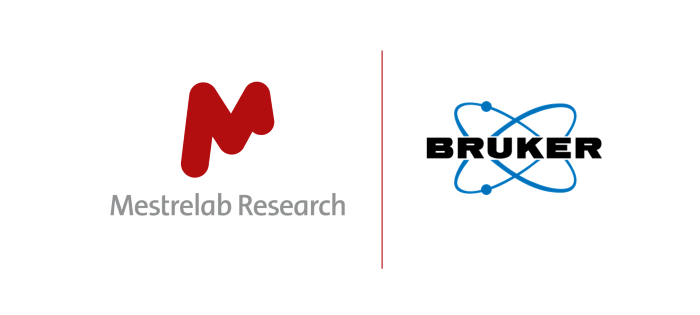
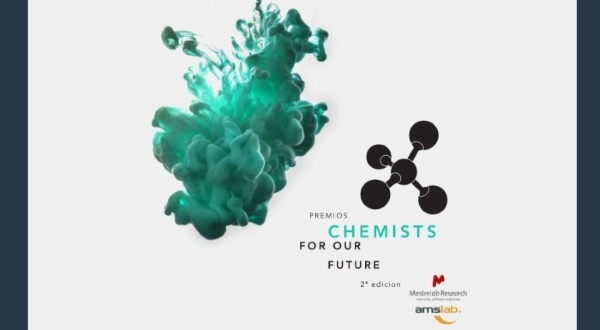

Mbook provides several levels of access through user roles, limiting access depending on the position occupied by the individual user (Admin, Project Manager, Group Manager, Bench Chemist and Guest). In addition to these roles, Mbook offers the possibility of further customisation of permissions by allowing Group Managers to designate Safety, Inventory or Structure managers.
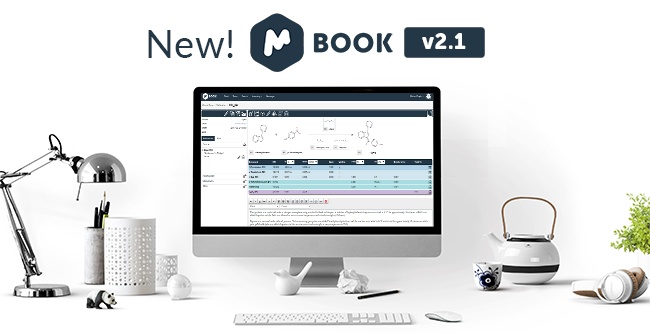
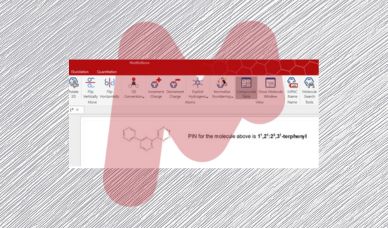
Our current achievement is generating of Preferred IUPAC Names (PIN) for
- unbranched rings assemblies of 3 through 6 identical cyclic systems
- branched rings assemblies.
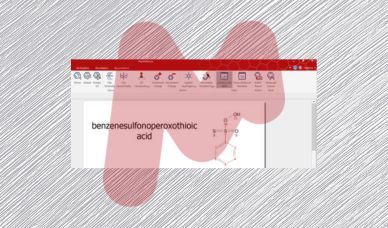
Once again let’s speak about Mnova innovative approach that allows to generate correct IUPAC names for most of the possible modifications of suffix groups. Let’s look at the suffix group sulfonic acid.
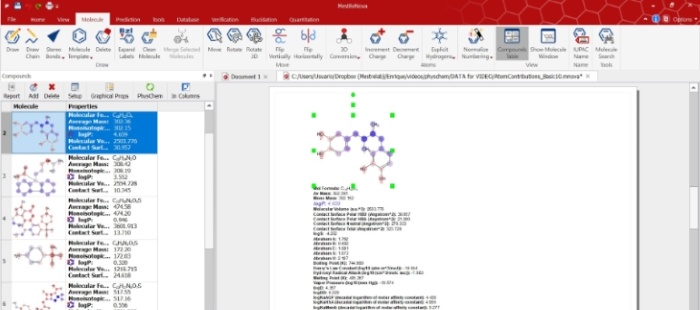
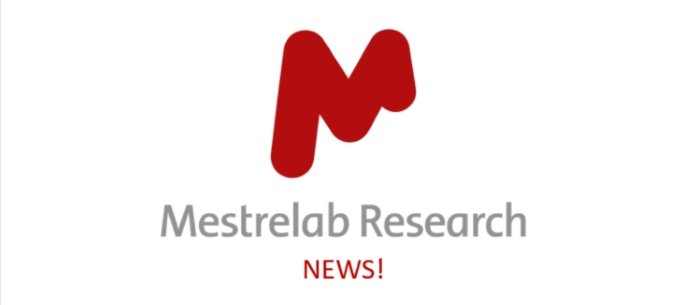

The IUPAC naming algorithm in Mestrelab Research SL’s Mnova IUPAC Name plugin represents an innovative step forward compared to other software products with similar functionality available in the marketplace.
